Related Research Articles

The straight-eight engine is a piston engine with eight cylinders arranged in a straight line along the crankshaft. The number of cylinders and perfect primary and secondary engine balance resulted in smooth running, however there are several downsides relating to the significant length of the engine.

R101 was one of a pair of British rigid airships completed in 1929 as part of a British government programme to develop civil airships capable of service on long-distance routes within the British Empire. It was designed and built by an Air Ministry–appointed team and was effectively in competition with the government-funded but privately designed and built R100. When built, it was the world's largest flying craft at 731 ft (223 m) in length, and it was not surpassed by another hydrogen-filled rigid airship until the LZ 129 Hindenburg was launched seven years later.
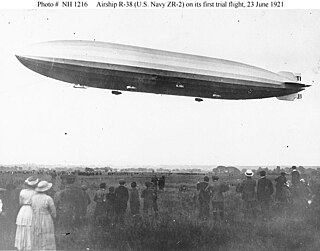
The R.38 class of rigid airships was designed for Britain's Royal Navy during the final months of the First World War, intended for long-range patrol duties over the North Sea. Four similar airships were originally ordered by the Admiralty, but orders for three of these were cancelled after the armistice with Germany and R.38, the lead ship of the class, was sold to the United States Navy in October 1919 before completion.

His Majesty's Airship R100 was a privately designed and built British rigid airship made as part of a two-ship competition to develop a commercial airship service for use on British Empire routes as part of the Imperial Airship Scheme. The other airship, the R101, was built by the British Air Ministry, but both airships were funded by the Government.

Cardington is a village and civil parish in the Borough of Bedford in Bedfordshire, England.
R.36 was a British airship designed during World War I, but not completed until after the war. When she first flew in 1921, it was not in her originally intended role as a patrol aircraft for the Royal Navy, but as an airliner, the first airship to carry a civil registration (G-FAAF).

The R.33 class of British rigid airships were built for the Royal Naval Air Service during the First World War, but were not completed until after the end of hostilities, by which time the RNAS had become part of the Royal Air Force. The lead ship, R.33, served successfully for ten years and survived one of the most alarming and heroic incidents in airship history when she was torn from her mooring mast in a gale. She was called a "Pulham Pig" by the locals, as the blimps based there had been, and is immortalised in the village sign for Pulham St Mary. The only other airship in the class, R.34, became the first aircraft to make an east to west transatlantic flight in July 1919 and, with the return flight, made the first two-way crossing. It was decommissioned two years later, after being damaged during a storm. The crew nicknamed her "Tiny".
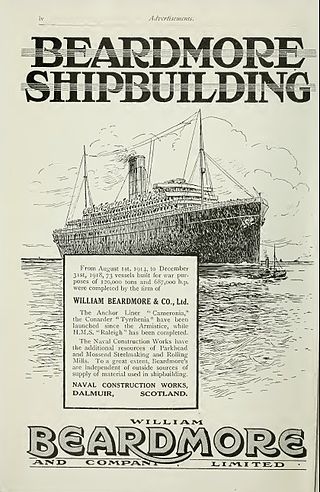
William Beardmore and Company was a British engineering and shipbuilding conglomerate based in Glasgow and the surrounding Clydeside area. It was active from 1886 to the mid-1930s and at its peak employed about 40,000 people. It was founded and owned by William Beardmore, later Lord Invernairn, after whom the Beardmore Glacier was named.

The Rolls-Royce Condor aircraft piston engine was a larger version of the Rolls-Royce Eagle developing up to 675 horsepower. The engine first ran in 1918 and a total of 327 engines were recorded as being built.
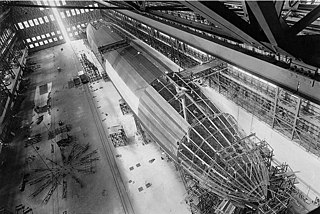
A rigid airship is a type of airship in which the envelope is supported by an internal framework rather than by being kept in shape by the pressure of the lifting gas within the envelope, as in blimps and semi-rigid airships. Rigid airships are often commonly called Zeppelins, though this technically refers only to airships built by the Luftschiffbau Zeppelin company.
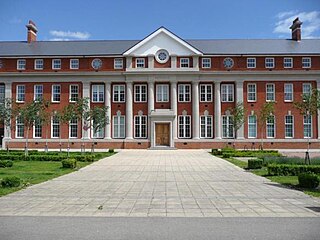
Shortstown is a village and civil parish on the outskirts of Bedford, on a ridge above the River Great Ouse, originally called Tinkers Hill.

The British Imperial Airship Scheme was a 1920s project to improve communication between Britain and the distant countries of the British Empire by establishing air routes using airships. The first phase was the construction of two large and technically advanced airships, the R100 and the R101; the R100 made a successful transatlantic crossing to Canada in 1930 in 78 hours. The scheme was terminated in 1931 following the crash in France of R101 in October 1930, while attempting its first flight to India.
Airship hangars are large specialized buildings that are used for sheltering airships during construction, maintenance and storage. Rigid airships always needed to be based in airship hangars because weathering was a serious risk.

Cardington Airfield, previously RAF Cardington, is a former Royal Air Force station in Bedfordshire, England, with a long and varied history, particularly in relation to airships and balloons.

The Beardmore Tornado was an eight-cylinder inline diesel aircraft engine built in 1927 by William Beardmore and Company of Glasgow, Scotland, and used in the British R101 airship when petrol engines were thought unsafe in the tropics. The model is given as Tornado IIIA or Tornado III C.I. The fuel is described as Diesel heavy-oil.
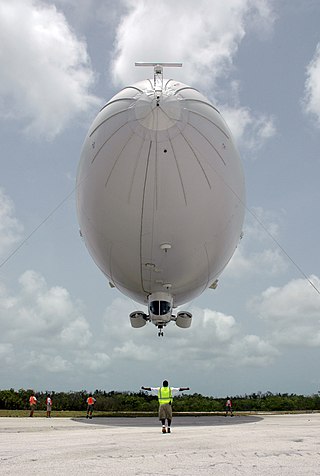
Airship Industries was a British manufacturers of modern non-rigid airships (blimps) active under that name from 1980 to 1990 and controlled for part of that time by Alan Bond. The first company, Aerospace Developments, was founded in 1970, and a successor, Hybrid Air Vehicles, remains active as of 2022. Airship Industries itself was active between 1980 and 1990.
Beardmore-Halford-Pullinger (BHP) were a series of aircraft engines used in production between 1916 and 1918. The engines were used on many notable First World War aircraft, such as the Airco DH.4, DH.9, Airco DH.10 Amiens, de Havilland DH.15 and Avro 529 aircraft.
Flight Lieutenant Herbert Carmichael "Bird" Irwin, AFC was an Irish aviator and Olympic athlete.

Major George Herbert "Lucky Breeze" Scott, CBE, AFC, was a British airship pilot and engineer. After serving in the Royal Naval Air Service and Royal Air Force during World War I, Scott went on to command the airship R34 on its return Atlantic crossing in 1919, which marked the first transatlantic flight by an airship and the first east–west transatlantic flight by an aircraft of any kind. Subsequently, he worked at the Royal Airship Works in connection with the Imperial Airship Scheme and took part in a second return Atlantic crossing, this time by the R100, in 1930. He was killed later in the year aboard the R100's near-sister, the R101, when it crashed in northern France during a flight to India.
References
- R102, the inside story of Project H, Airship Heritage Trust